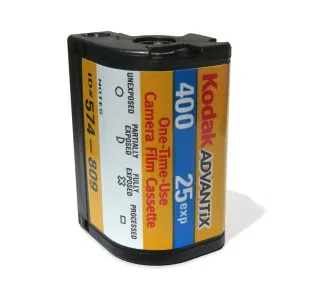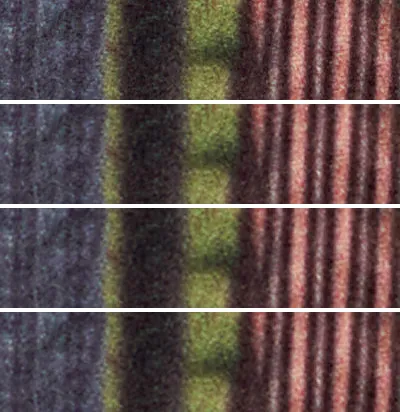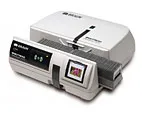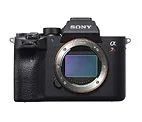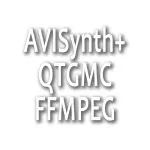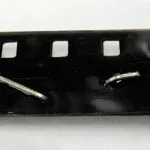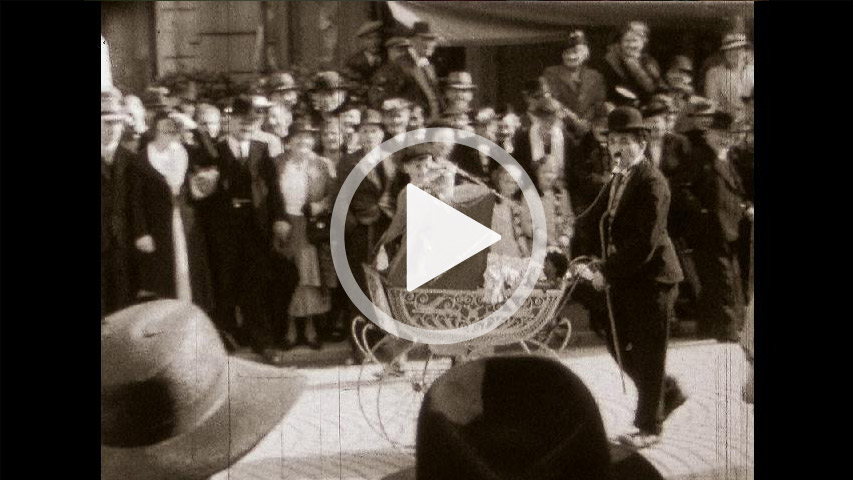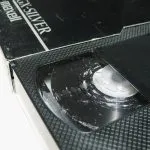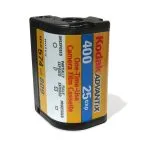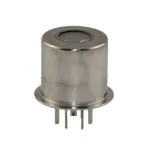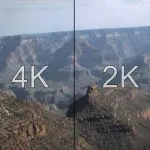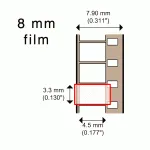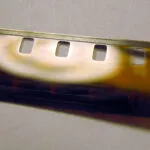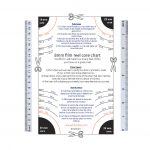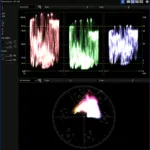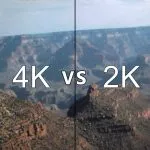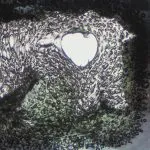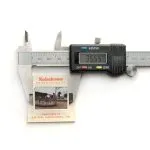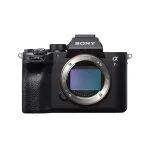35mm Film Resolution
Nowadays, when we refer to a photograph's "resolution" or "image quality", we generally mean its pixel density or, when printed, its Dots per Inch (DPI). Back in the days of film photography, a comparable measure of image quality was based on the film's grain. Since FilmFix deals with 35mm film transfers (as opposed to larger-format films that some photographers used), we will confine this discussion to 35mm film resolution.
Thirty-five-millimeter film has a digital resolution equivalent to approximately 5.6K — a digital image size of about 5,600 × 3,620 pixels. The finite resolution of film will fluctuate, based on multiple variables (see list below). A film's image quality depends on its "grain".
Grain begins as tiny silver particles in the film's emulsion. These silver particles have the job of storing the image information. Before the film is exposed, they are light-sensitive. Upon exposure to light, the aggregate of silver particles records a latent image. Then, after the exposed film is developed, the now light-activated silver particles resolve into dots of color (in the case of color film) or shades of gray (in the case of black-and-white film). These dots are known as grain.
All of these variables influence the film's resolution:
- Is the film black & white or color?
- What is the ASA (ISO) value of the film? The ASA (American Standards Association) — now more commonly known as ISO (International Organization for Standardization) — value refers to the film's "speed", or light sensitivity. ASA/ISO values translate directly into grain size: Higher ASA/ISO = larger grain. As a general rule, "fine-grained film" requires more light or longer exposure, whereas coarse-grained film can be used in low-light conditions.
- What is the type of grain: T-Grain film, or traditional grain film?
- What is the brand and quality of the film? Film photographers commonly used Ektachrome, Kodachrome, and many other film brands — each with its own varying attributes and characteristics.
- What was the film's developing method? For example, raising the processing solution temperature will increase the silver grain size, thus decreasing the film's resolution.
Transfer-Samples from 9.5K to 4K
The four image strips illustrate a 35mm slide excerpt, of a slide we digitized. From top to bottom, it was captured at 9.5K, 7.1K, 5.6K, and 4K resolution.
One can see how the bottom-most, the 4K scan, looks blurry and is not holding the details of the grain. In comparison, when you look at the first two images, the difference between 9.5K to 7.1K is barely detectable. We transfer 9.5K, as seen in the top-most strip.
Now, with the dominance of digital imagery, film grain can be compared to pixel count or Dots per Inch. The table below illustrates how this comparison applies across various devices.
An Overview of MP (Megapixel), DPI (Dots per Inch), and Print Size Equivalencies
| Media, Device | Pixel Count | Megapixels (more is better) | Image or Frame Dimensions in Pixels | Print Size in Inches at 300 DPI |
| VHS (NTSC) | 0.16MP | 480×333 luma 480×40 chroma | 1.6×1.1 | |
| VHS (PAL) | 0.19MP | 576×335 luma 240×40 chroma | 1.9×1.1 | |
| Full HD | 2K | 2.1MP | 1920×1080 | 6.4×3.6 |
| UHD TV Apple iPhone X | 4K | 8.8MP | 4096×2160 | 13.6×7.2 |
| 35mm Film | ||||
| 5.6K | 21MP (3) | 5600×3620 | 18.7×12.1 | |
| Slide Scanner | ||||
| 7.1K | 37MP(6) | 7150×4767 | 23.8×(15.4) (7) | |
|
Braun 7000
(10,000 DPI) (6) |
Tests have shown that it is not performing at 10,000 DPI (6) but at approximately 6,500 DPI, even if the scan mode is set to the extended scan setting. Moreover, transfer houses avoid this mode, because it takes too long for a slide scan. | |||
| and what sets us apart here at FilmFix | ||||
| FilmFix Transfer System |
35mm Slide Transfer System (8) (6,800 DPI) Learn More
|
|||
| 9.5K |
Actual
62.5MP
Effective
61MP |
9504×6336 | 36.6×21.1 (7) | |
Enlargement Limits
The renowned photographer Ansel Adams had a simple rule of thumb for enlarging images: avoid printing film to paper at more than 4 times its original size.
To illustrate just how small this rule of thumb yields for 35mm film (frame size 24mm × 36mm), Adams would print his 35mm negatives at a maximum of 96mm × 144mm, or 3.8 × 5.6 inches.
Adams would not enlarge more than 4 times his film's original size, because any further magnification would too clearly reveal the film grain. However, when archiving slides, one wants all the grain to be preserved.
Transfers at FilmFix Are Designed for Archiving Slides
Our transfers exceed your film's resolution capacity. At 9.5K, we out-perform all commercial slide scanners. We deliver an impressive 9,504 × 6,336 pixel file to you. We have the highest optical film transfer system that we know of.
If you print at 300 DPI (the printing standard), you can expect a quality print from our high-resolution scan. This will be true for images printed up to a size of 21.1" x 31.7" (for 35mm film). Enlarging from 35mm to a print this size would appear to obviate Adams' rule of thumb mentioned above. In fact, you will see the film's grain crisply detailed in the printed image.
Keep in mind that the quality of the printed image depends on:
- The original type of film
- The quality of the lens used to capture the image
- The skill of the photographer
Footnotes and Sources
1 35mm film 20MP https://pic.templetons.com/
2 35mm film 21MP https://www.quora.com/
3 20MP filmscanner Info
4 Braun 6000 (16-bit) if scanning at ME MultiExposure "The tool is called ME in the software and serves as a means to increase dynamic range" up to Dynamic Range 3.8 Dmax (but takes longer to scan)
5 Pacific Image PowerSlide X Automated 35mm Slide Scanner (48-Bit)
6 "Is advertised as 10,000dpi but is 5,000dpi" (source)
7 Some people believe that printing anything larger than what the film will store will yield a better image. In fact, doing so will only increase the grain size and produce bigger more defined grain.
8 At FilmFix we visually inspect and manually adjust each slide for its optimal exposure. The camera we use is a Sony A7R IV, capturing RAW at 14-bit, with a Dynamic Range of nearly 15 stops (14.77 EV). This degree of resolution shows the film grain in great detail, and stores all the image information of which a slide is capable.








